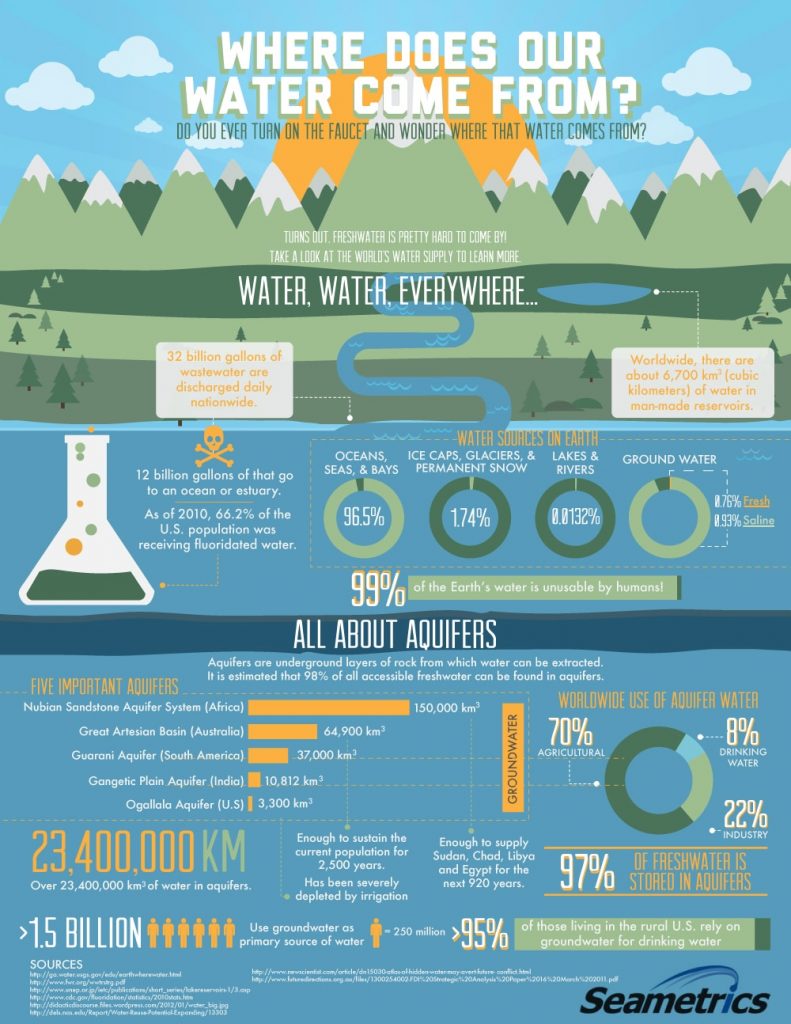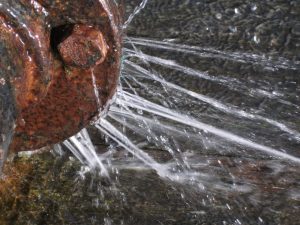Tata & Howard, Inc. conducted an energy audit of the City of Flagstaff’s Water System. The purpose of this energy audit was to identify energy conservation opportunities that would provide annual and life cycle power cost savings for the City of 66,600 people. Tata & Howard provided upgrades that would raise efficiency, resulting in significant annual savings. In addition, the upgrades qualified for a rebate through APS, resulting in an average payback of less than three years.
Tag: water
Where Our Water Comes From [INFOGRAPHIC]
Only 1% of our world’s water is usable by humanity. The drought conditions in the United States have brought water conservation to the forefront of people’s minds, and conservation is certainly necessary. But we also need to invest in infrastructure and implement efficient practices including reclamation if we are to protect our world’s most precious resource now and in the future.
Where our water comes from:
Tata & Howard, Inc. participates in Rally for the Jimmy Fund
Tata & Howard, Inc. participates in Rally for the Jimmy Fund
Charitable event celebrates over $4 million in donations to Dana-Farber Cancer Institute since its 2006 inception
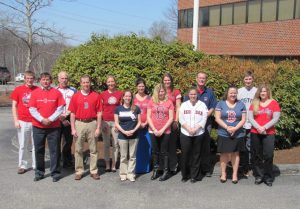
MARLBOROUGH, MA, April 14, 2015 – Tata & Howard, Inc., a leading innovator in water, wastewater, stormwater, and hazardous waste engineering solutions, participated in the Rally for the Jimmy Fund yesterday. The Rally encourages people to wear Red Sox gear on Opening Day at Fenway Park, which fell on Monday, April 13 this year, in exchange for a donation to the Jimmy Fund. Tata & Howard team members were happy to donate to the Jimmy Fund while enjoying a casual Red Sox day at the office.
The Rally and the Jimmy Fund
The Red Sox organization has partnered with the Jimmy Fund since 1953, and the Rally for the Jimmy Fund is just one of many Red Sox/Jimmy Fund initiatives. Monies raised through the Rally help ease the patient experience and allow future discoveries to revolutionize cancer treatments around the world. Eighty-nine cents of every dollar raised by the Jimmy Fund and Dana-Farber goes directly to Dana-Farber Cancer Institute, which received the highest possible ranking of four stars by Charity Navigator, America’s largest independent evaluation of non-profit organizations. Since its inception in 2006, Rally for the Jimmy Fund has raised over $4 million.
“We are thrilled to be part of such a worthwhile charity,” stated Donald J. Tata, P.E., President of Tata & Howard.” Through participation in other local events such as the PanMass Challenge and the Mass Dash for the Jimmy Fund, Tata & Howard team members raise funds for the Jimmy Fund throughout the year. The Rally for the Jimmy Fund was yet another way for us to support Dana-Farber and cancer research.”
World Water Day 2015 — Sustainable Development and Its Criticality to Domestic Water Supplies
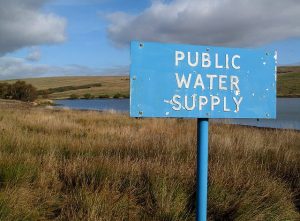 “When the well is dry, we learn the worth of water.” – Ben Franklin, Poor Richard’s Almanac 1733
“When the well is dry, we learn the worth of water.” – Ben Franklin, Poor Richard’s Almanac 1733
World Water Day is March 22, 2015, and the theme is Sustainable Development. But what exactly IS sustainable development? It was first defined by the Brundtland Commission in 1983:
- Sustainable development is development that meets the needs of the present without compromising the ability of future generations to meet their own needs.
More recently, University of Maryland School of Public Policy professor and former Chief Economist for the World Bank Herman E. Daly proposed the following three rules for sustainability:
- Renewable resources such as fish, soil, and groundwater must be used no faster than the rate at which they regenerate.
- Nonrenewable resources such as minerals and fossil fuels must be used no faster than renewable substitutes for them can be put into place.
- Pollution and wastes must be emitted no faster than natural systems can absorb them, recycle them, or render them harmless.
While sustainable development always includes the global effort to provide clean water and sanitation to the world’s population, it also requires developed nations to implement efficient technologies and to protect existing resources by addressing threats and incorporating conservation strategies into daily life. Consider these facts:
- Less than 1 percent of the world’s fresh water is usable in a renewable fashion
- The average person requires 1.3 gallons of water per day just to survive, while the amount of water needed for all daily tasks – like drinking, cooking, bathing, and sanitation – is 13 gallons
- The average American uses 65 to 78 gallons of water per day for drinking, cooking, bathing, and watering their yard; the average Dutch uses only 27 gallons per day for the same tasks
- The average Gambian uses only 1.17 gallons of water per day
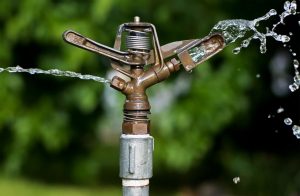 America is one of the world’s largest consumers of water, and to do our part towards sustainable development, we must begin by modifying our domestic water usage.
America is one of the world’s largest consumers of water, and to do our part towards sustainable development, we must begin by modifying our domestic water usage.
Efficiency – the Most Effective Method of Conservation
By implementing indoor residential conversation techniques, we could meet the water needs of over five million people by the year 2020, and by incorporating efficient irrigation techniques, we could save enough water to meet the needs of an additional 3.6 million people. In addition, if we were to also invest in our nation’s water infrastructure and supply to incorporate efficient technologies to reduce water loss, we would be able to meet all of our domestic water needs — agricultural, industrial, and residential. This would result in easing the stress on our natural resources as well as saving enough water to guard against another concern: climate change.
Climate Change in the United States – An Imminent Threat
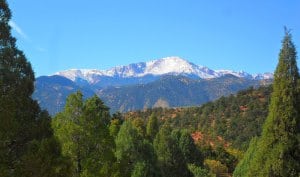 Climate change increases the risk of extreme weather, such as droughts and floods, and alters the timing and location of precipitation. For example, climate change has the potential to alter snowfall and snowmelt in the Rocky Mountains, Sierra Nevada, and Pacific Northwest. Any alteration in snowfall or snowmelt will cause changes in timing and volume of runoff, resulting in flooding in the winter and drought in the summer. In addition, coastal aquifers and water supplies in areas such as Cape Cod, Long Island, the coastal Carolinas, and central coastal California are extremely vulnerable to rising sea levels caused by climate change. Other products of climate change — such as higher water temperature in lakes and streams, melting permafrost, and reduced water clarity — have the potential to critically threaten fish and water-dwelling animals as well harm wetlands and other water habitats. Climate change has the potential to drastically alter our nation’s weather patterns and geological landscape, and any delays in addressing climate change and in planning effective strategies for the impending changes could severely threaten our nation’s water supplies. Clearly, addressing climate change now is one of the key components to sustainable development.
Climate change increases the risk of extreme weather, such as droughts and floods, and alters the timing and location of precipitation. For example, climate change has the potential to alter snowfall and snowmelt in the Rocky Mountains, Sierra Nevada, and Pacific Northwest. Any alteration in snowfall or snowmelt will cause changes in timing and volume of runoff, resulting in flooding in the winter and drought in the summer. In addition, coastal aquifers and water supplies in areas such as Cape Cod, Long Island, the coastal Carolinas, and central coastal California are extremely vulnerable to rising sea levels caused by climate change. Other products of climate change — such as higher water temperature in lakes and streams, melting permafrost, and reduced water clarity — have the potential to critically threaten fish and water-dwelling animals as well harm wetlands and other water habitats. Climate change has the potential to drastically alter our nation’s weather patterns and geological landscape, and any delays in addressing climate change and in planning effective strategies for the impending changes could severely threaten our nation’s water supplies. Clearly, addressing climate change now is one of the key components to sustainable development.
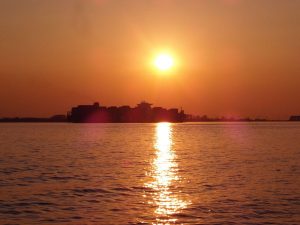 While the global focus of sustainable development needs to be on providing access to clean water and sanitation for everyone, we also need to look within our own borders and change the way we think about water and our natural resources. Unless we institute positive change and focus on conservation by implementing efficient technologies and practices, we will likely find ourselves facing dire consequences. As Dr. Peter Gleick, president of the Pacific Institute, stated so eloquently, “The best way to solve emerging threats to the world’s fresh water is by rethinking how we use and manage our scarce resources. We must look at ways to increase our efficiency of use, instead of just building more dams and reservoirs. Improving the efficiency of our water systems, taking real steps to tackle global warming, and opening the policy debate over water to new voices can help turn the tide.”
While the global focus of sustainable development needs to be on providing access to clean water and sanitation for everyone, we also need to look within our own borders and change the way we think about water and our natural resources. Unless we institute positive change and focus on conservation by implementing efficient technologies and practices, we will likely find ourselves facing dire consequences. As Dr. Peter Gleick, president of the Pacific Institute, stated so eloquently, “The best way to solve emerging threats to the world’s fresh water is by rethinking how we use and manage our scarce resources. We must look at ways to increase our efficiency of use, instead of just building more dams and reservoirs. Improving the efficiency of our water systems, taking real steps to tackle global warming, and opening the policy debate over water to new voices can help turn the tide.”
We couldn’t have said it better.
REFERENCES:
www.awra.org
www.pacinst.org
Keep your Water Running During a Blizzard
 A common saying here in New England is, “If you don’t like the weather, wait ten minutes.” It’s true our weather is hard to predict and this winter alone we’ve had temps as high as in the 50’s to below zero.
A common saying here in New England is, “If you don’t like the weather, wait ten minutes.” It’s true our weather is hard to predict and this winter alone we’ve had temps as high as in the 50’s to below zero.
But when the meteorologists report that a blizzard is imminent, most New Englanders know to respect the warnings and Mother Nature.
One of the most probable and most dangerous issues that come up during a blizzard is power losses. With overhead power lines and lots of trees in the way, high winds and heavy snow more often than not will take down the power. In below freezing temps, power outages can be extremely dangerous to you and your water pipes. Here are a few tips to keep you safe this week and in future winter storms.
1. Keep the water running! Water pipes tend to freeze in temperatures below 20 degrees Fahrenheit (about -7 degrees Celsius). Prevent this by wrapping your interior pipes with foam insulation. If the temperature is dropping, leave your faucets running at a slow drip.
Run the cold water from the lowest point in the house, usually a laundry room sink or tub. Keep your drain clear of debris to prevent overflow or flooding.
The idea is to keep the water flowing constantly at a rate of about one gallon every four minutes. Do not run your hot water.
2. Layer Up! Next to the Blizzard Kit, keep a bag of warm clothes for each person in the household. If the lights are out, it will be hard to find that really warm turtle neck or a pair of warm socks or gloves…in the dark.
3. Stock a Blizzard Kit with the following: batteries, flash lights, battery operated radio/television, bottled water, toilet paper, nonperishable foods such as cereal or crackers, canned goods, a non electric can opener, a small cooler, candles, prescription medicines and any over-the-counter remedies you use regularly; and if you have young infants or toddlers – diapers, baby wipes, formula, baby food.
4. Then, stock a “Boredom” Kit, as well. Count on the power being out for at least a day or two and have some board games and a deck of cards on hand. An easily available activity kit next to the blizzard kit with arts and crafts for the kids is crucial for long periods of power loss – especially if there isn’t any television to distract them.
5. Charge all your devices. Now’s the time to get all the devices in your house fully charged and easy to find. Now is the time to add emergency numbers in your phone’s memory for easy access when you need them.
6. Finally, STAY INSIDE. However tempting it may be for kids to go out and make snow angels or play in the falling snow, use caution. Those blowing winds – both before and after a blizzard – are cold enough to cause frostbite, and snowdrifts may hide dangers children might otherwise see. Stay indoors where it’s safe, and warm!
Blizzards are serious business. Weather forecasters can only predict so much. Educate yourself and stay on top of the updates in your area. There is no harm in being overly cautious. In most cases where a blizzard is concerned, it truly is better to be safe than sorry.
Clean Water – The Greatest Gift this Holiday season
We here at Tata & Howard wish you all a happy, healthy, and safe holiday and prosperous new year!
It’s the holidays again and ’tis the season for giving gifts, being with our loved ones and celebrating our good fortune by helping those in need.
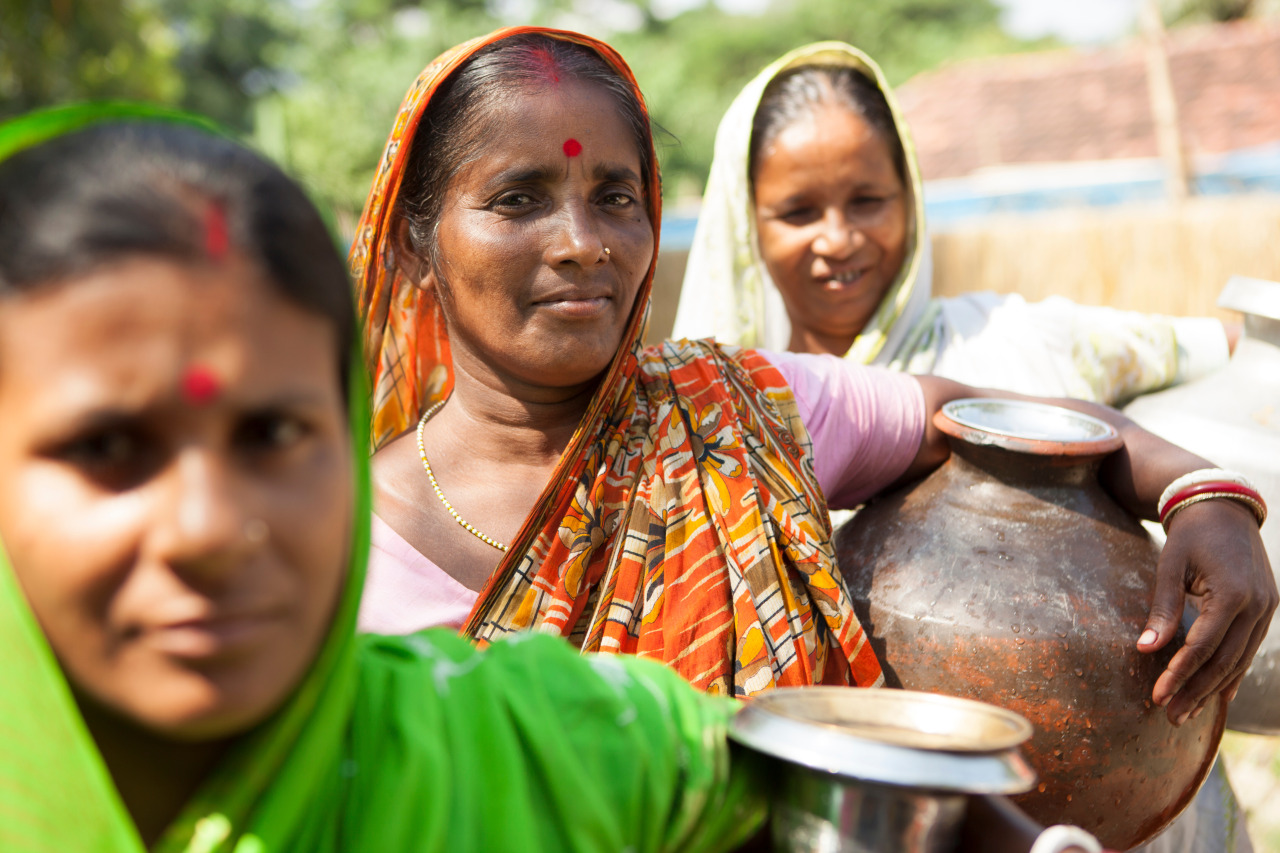
Here at Tata & Howard we are doing just that. 2014 has been a busy year for us; one of growth and many successes delivering and maintaining proper access to clean water sources for communities all over the country . That is why at this time of year we like to support the gift of clean water for those who sadly don’t have access to this basic human right in other countries. In addition to the great community service work our regional offices do locally, our team also contributes throughout the year to our corporate holiday giving fund. At the end of year the money which staff have contributed is then matched by the company and donated to Water for People.
This global non-profit explains their work is as simple as their name. “We want all people to have safe, continuous water, and when they do, our job will be done. We want water for everyone, forever.”
Currently, 748 million people around the world do not have access to clean water. And, 2.5 billion people – or one in three people – do not have access to something as basic as a toilet. Lack of access to clean water is at epidemic proportions and contributes to higher mortality rates, lower education levels, and increased violence in countries affected.
Water for People is looking beyond toilets and wells and water pumps, and into the future. The group works with people in affected countries to find out how they live and what they need to feel healthy, safe, empowered, and successful. As their website says, “We’re designing solutions based on long-term needs — and long lives. We don’t want to be around forever, but we want water to be.”
And this non-profit gets it. The founders, Ken Miller, a former president of AWWA, Wayne Weiss, and John B. Mannion, a former executive director of AWWA, joined forces to create a path for Water For People’s establishment as an international nonprofit development organization in 1991, which grew to become a leader in social responsibility and innovation in the sector.
Today, Water For People is the AWWA designated charity of choice, and is also endorsed by the Water Environment Federation, the Water Quality Association, the National Association of Water Companies, the National Association of Clean Water Agencies, and the Association of Metropolitan Water Agencies.
40 BILLION HOURS from Water For People on Vimeo.
Find out more about their work by visiting their website We hope you are inspired as much as we are to give thanks at this year’s end by contributing to support the development of clean and healthy water sources for more around the world.
We here at Tata & Howard wish you all a happy, healthy, and safe holiday and prosperous new year!
Smart Grid Water Networks: Part of the Water Efficiency Arsenal
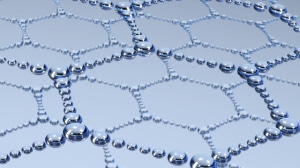 The impacts of global climate change have driven governments, businesses, and communities around the world to consider efficiency and conservation in all areas of our lives, rethink business plans, and reconsider the relationships between people and resources to create a more sustainable future.
The impacts of global climate change have driven governments, businesses, and communities around the world to consider efficiency and conservation in all areas of our lives, rethink business plans, and reconsider the relationships between people and resources to create a more sustainable future.
Nowhere is this focus on sustainability clearer than in water utilities. Faced with an aging distribution infrastructure in need of overhauling, growing populations, and shrinking supply, utilities are struggling with developing innovative, yet cost effective, ways to maintain and improve already maxed out water systems.
Just as smart metering has shed light on our energy use, utilities, environmental groups, and governments are beginning to look to smart metering to help with water conservation.
What is Smart Networks and Metering? AMI vs. AMR
A smart water network – or smart grid for water – may be the next big thing as communities around the world come to terms with water scarcity and the need for water conservation. The crux of the smart water network is advanced metering infrastructure (AMI) technology. AMI can provide a remote and constant two-way communication link between utilities, meters and consumers via the usual communications technologies (broadband, fiber optic cable, wireless, etc.).
As a key component of a smart water network, smart water meters integrated with sensing technologies give water utilities advanced tools for more efficiently measuring water consumption and providing water customers with data to help them monitor their water usage and reduce costs. Often known as “smart lite”, advanced meter reading (AMR) technology, one-way information gathering from customer to utility is seen as a cost effective approach to accurate billing and leakage. This solves the bulk of many water utility needs.
Benefits – Knowledge is Power
Smart metering increases the information available to the customer which helps them better understand and curb their water use.
Preliminary investigation indicates that customers with displays are more likely to use less water. However, installing monitors at each customer site may come with a price tag water utilities find difficult to afford. As a result, many elect less expensive ways to provide consumption details, such as Web sites or printouts enclosed with bills. Although surveys indicate that customers prefer the on-site display, web portals are another effective method to link concerned customers to information on how to lower consumption and/or bills.
Smart metering also delivers valuable data to utilities. For example, utilities can use the data collected to detect customer-premises leaks from their end. Utilities could also use the technology to identify possible leaks at commercial and industrial properties with round-the-clock water use.
More over, according to UN-Water, approximately 8% of the world’s energy production is used for pumping, treating and transporting water. Saved water means saved energy—a double benefit—and a better future for generations to come.
Smart water networks have evolved to the point where they can reliably produce the benefits described above, within very reasonable payback periods. While many jurisdictions are contemplating extreme measures – water rationing, desalinization plants, building canals hundreds of miles long – smart water networks can reclaim 20% to 40% of water that is typically lost to leaks and theft, according to SmartGridNews.com.
So What’s the Catch?
While there are increasing studies looking at the benefits and uses of smart metering, utilities are not overlooking the price tag that comes along with the technology. Additionally, the jury is still out whether or not customers will embrace yet another judgement on their lifestyle. In the early days of energy metering, some utilities paid big bucks to have local energy use comparisons printed on customer bills. The frowning face on high energy-use customers’ bills did very little to encourage conservation and win over utilities good intentions with the public.
There are still many challenges in network understanding and costs analysis that make smart water networks slow in development. Despite the many benefits, justifying the implementation of the technology to support smart metering will require cooperation and support from local and regional governments, communities, and above all, customers.
Careful planning and close scrutiny of all the costs associated with implementing a smart water network will allow utilities to plan for scaleable implementation of this technology.
Clean Water Made the First Thanksgiving a Feast to Remember
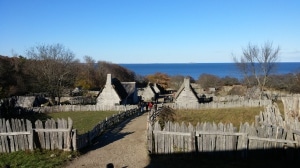 It’s Thanksgiving! It’s that time of year when we cover our table with a feast of turkey, cranberries, and potatoes and imagine that we are celebrating as the earliest settlers had nearly four hundred years ago. But more likely, the Pilgrim and Wampanoag people enjoyed a plentiful bounty of waterfowl and fish at their feast – game and seafood attracted to the area by the clean, undisturbed waters of 17th-century Massachusetts.
It’s Thanksgiving! It’s that time of year when we cover our table with a feast of turkey, cranberries, and potatoes and imagine that we are celebrating as the earliest settlers had nearly four hundred years ago. But more likely, the Pilgrim and Wampanoag people enjoyed a plentiful bounty of waterfowl and fish at their feast – game and seafood attracted to the area by the clean, undisturbed waters of 17th-century Massachusetts.
Many historians believe that turkey and potatoes were not actually present at the first Thanksgiving. Turkey did not become the poster-bird for Thanksgiving until the early 1800s. Back in 1621, the feast, which lasted three days, was comprised of foods that could easily be obtained in the region, and the local waters were an excellent resource for finding these.
According to one article, the birds that were most likely eaten were migratory ducks and geese attracted to the clean rivers, streams, and lakes of the Plymouth area. Without these clean waters attracting birds to Massachusetts, the first Thanksgiving meal would have been much less impressive than it actually was. Below the surface of the rivers and streams, and the ocean of Massachusetts where this three-day feast took place, the Pilgrims and members of the Wampanoag tribe found many delicacies to add to their dinner table. Clams, cod, lobsters, and eels were plentiful in the clean, undisturbed waters, and the early Americans took full advantage of this.
Additionally in an article from Smithsonian Magazine, there are reports that while there may have been beer at the table, there would have only been about a few gallons for 150 people over three days. The rest of the group probably washed the meal down with water. Another reason the guests at the first Thanksgiving were probably thankful for the clean waters available to them.
Water has certainly been a very important – if often overlooked- element of any Thanksgiving dinner. While you’re boiling your potatoes, and getting the lumps out of the gravy, reflect on a feast such as this without water and give thanks by conserving water in your cooking.
May you and yours enjoy a happy and “water-ful” Thanksgiving!
Water, Water Everywhere: Understanding our Water Infrastructure
Staying afloat of our nation’s growing water infrastructure problems means understanding the culprits
Water main breaks, “Do not drink” orders, and water leak emergencies are headlines we are used to seeing as across the nation, Americans learn that the country is losing an estimated 2.1 trillion gallons of water each year due to leaking pipes, broken mains, and faulty meters.
The problem is that amongst all the infrastructure systems we have – transportation, telecommunications, air traffic control – water and sewer pipelines are mostly hidden from our daily lives. We often don’t know there is a problem, until there is one.
And yet, our water system is one of the most important and economically viable infrastructure systems we have in our country. The US Department of Commerce Bureau of Economic Analysis estimates that for every dollar spent on water infrastructure, about $2.62 is generated in the private economy, and for every job added in the water workforce, about 3.68 jobs are added to the national economy.
A recent article from National Public Radio blames much of the problem to aging pipes originally installed close to 100 years ago. In many cases, however, that isn’t necessarily the case. Some pipes can last hundreds of years in proper soil conditions. In other cases pipes just a couple of decades old can be found in complete disrepair because of the environment around the pipe.
Just think about your town and how it has developed over the last 10,15, or even 20 years. The town is probably unrecognizable compared to what it looked like 100 years ago when many of the same water lines we use today were installed. New elements, often corrosive ones, may have been introduced into the soil surrounding the pipelines including landfills, cinders in the pavement, contamination, stray currents, and high groundwater. These elements represent only a few that will degrade the exterior of the pipe over time, ultimately causing failure. By understanding why pipes fail and documenting corrosive areas, communities can focus their limited dollars on replacing pipes with a high risk of failure.
It has been estimated that over the next 20 years, upgrading municipal water and wastewater systems is expected to cost between $3 and $5 trillion. Building and replacing water and sewage lines alone will cost some $660 billion to $1.1 trillion over the same time period. This is money utilities will need and that states do not have to give. With water rates already on the rise, more has to be done to cost efficiently upgrade our infrastructure.
While the country is now faced with the inevitable burden of paying for upgrades, many in the industry argue that there is an efficient way to modernize our water infrastructure without breaking the bank. A suite of cost-effective approaches to reducing water loss and providing smart, responsible water service to customers are now being employed in municipalities across the country. Best practices include state-of-the-art auditing methods, leak detection monitoring, targeted repairs or upgrades, pressure management, and better metering technologies. By adopting such practices, water service providers can save themselves and their communities money in the long run, while protecting water resources and generating economic growth.
A New Kind of Pipeline
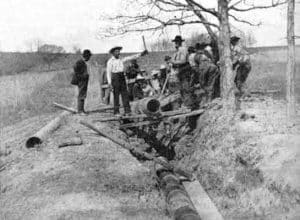
Although aqueducts were used as far back as the 7th century BC, the first actual pipeline was built in 1595 to carry salt water. It was an impressive 25 miles long and made from 13,000 hollowed tree trunks. In the United States, pipelines have been in use since 1865 when the first truly successful oil pipeline was built in Pennsylvania. Engineered by Samuel Van Syckle, an inventive oil worker from New Jersey, it was constructed of wrought iron and extended five miles from the Pithole pumps to the Oil Creek railroad. Since then, we’ve built pipelines that are literally thousands of miles long that transport not only oil, but also water, natural gas, gasoline, and ethylene, and they even cross international borders.
Typically, pipelines can be classified in three categories, depending on purpose:
- Gathering pipelines are short, interconnected pipelines with small diameters forming complex networks with the purpose of bringing crude oil or natural gas from nearby wells to a treatment plant or processing facility.
- Transportation pipelines are mainly long pipes with large diameters, moving products such as oil, gas, and refined products between cities, countries, and even continents.
- Distribution pipelines (our specialty!) are composed of several interconnected pipelines with small diameters that are used to take products – like clean, treated water – to the final consumer.
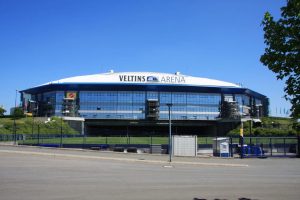 Very recently, however, there has emerged a fourth category of pipeline: beer pipelines.
Very recently, however, there has emerged a fourth category of pipeline: beer pipelines.
The Veltins-Arena in Gelsenkirchen, Germany is a massive soccer stadium that seats over 60,000 people. To cater to such a large crowd, it houses 15 restaurants, 50 grilling stations, 35 cafes, and four subterranean cooling centers that can store 52,000 liters of beer. To transport that beer, it has a three-mile long beer pipeline, built in 2013, that supplies all of the restaurants and bars in the arena. The pipeline transports up to 14 liters of beer per minute, and allows for fluctuations in flow determined by the thirstiness of its patrons. Impressed by the Veltins-Arena, European soccer team Zenit St. Petersburg is looking to install a beer pipeline in their new stadium as well.
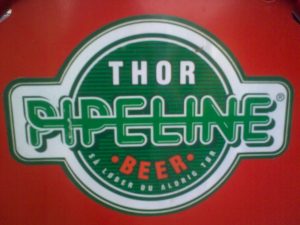 In Randers, Denmark, a beer pipeline supplies all of the bars and restaurants in the entertainment district. Originally connected to the Thor Brewery, which moved out of town in the 1990s, the pipeline is now fed by a large tank. Randers enjoys a thriving nightlife, and the pipeline ensures that cold beer is always readily available, even at outdoor taps. Appropriately enough, this Danish beer is called Thor Pipeline, and features an illustration of a pipeline in its logo.
In Randers, Denmark, a beer pipeline supplies all of the bars and restaurants in the entertainment district. Originally connected to the Thor Brewery, which moved out of town in the 1990s, the pipeline is now fed by a large tank. Randers enjoys a thriving nightlife, and the pipeline ensures that cold beer is always readily available, even at outdoor taps. Appropriately enough, this Danish beer is called Thor Pipeline, and features an illustration of a pipeline in its logo.
In the city of Bruges, Belgium, yet another beer pipeline has been approved and is planned for construction. The pipeline will stretch approximately two miles under the city streets, from a historic, family-owned brewery to its suburban bottling plant. De Halve Maan, founded in 1854, is the only family brewery in the city and is located in the center of Bruges, which is a UNESCO World Heritage Site. The beer pipeline, which will be capable of transporting 5,700 liters of beer per hour, will eliminate virtually all of the 500 trucks currently used to transport De Halve Maan\’s famous Brugse Zot beer, and will help to preserve the ancient cobblestone streets.

It seems evident that beer pipelines are the wave of the future. Installing beer pipelines in today’s gargantuan sporting arenas is a cost-effective way to cut transportation costs and reduce the risk of stockouts, while breweries would benefit by ensuring that their beer is always on tap. And on a smaller scale, just this past month Germany’s Oktoberfest constructed a 260 meter temporary pipeline to supply the nearly seven million liters of beer consumed at the two week long event. So far, the United States has yet to see a beer pipeline emerge, and we can’t help but wonder: who will be the beer pioneer and build the first American beer pipeline?

